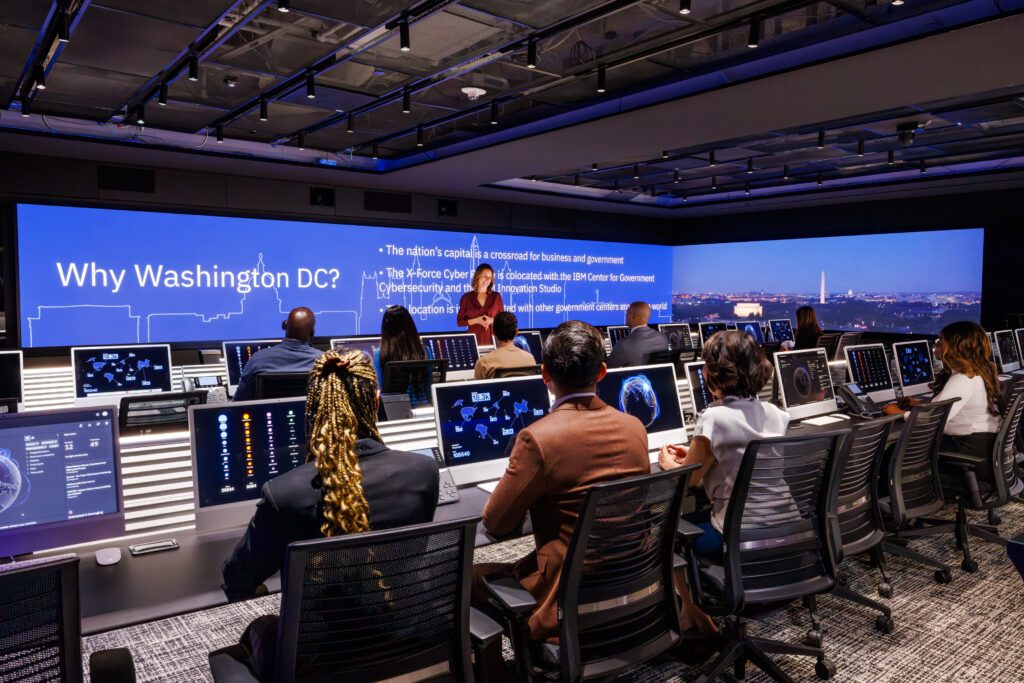
IBM’s X-Force Exchange has launched a state-of-the-art Cyber Range in Washington, DC, supporting the government’s efforts to strengthen cybersecurity defenses. This move demonstrates IBM’s commitment to empowering government agencies with the skills needed to tackle cyber crises effectively.
Historically, IBM’s X-Force mainly developed Cyber Ranges for internal use, with facilities located in Cambridge, Massachusetts, and Bengaluru, India, as shared by Troy Bettencourt, the global leader of X-Force’s Incident Response practice. They’ve also worked with third-party clients, including universities like the University of Ottawa, and offered mobile setups housed in trailers, bringing the experience directly to participants.
Introducing the DC Cyber Range
During an early March tour of the new DC facility, IBM showcased its advanced virtual environment, featuring a war-room-style security operations center with expansive screens and numerous workstations. This space can simulate real-world cyber operations, including scenarios tailored to government needs.
Bettencourt emphasized that the DC Cyber Range is specifically designed for federal government and contractor use, focusing on scenarios relevant to high-ranking officials. He highlighted the distinct requirements of high-ranking government officials during cyber incidents, who may have direct lines to federal investigative bodies, thereby bypassing the need for certain discussions typical in the private sector, such as cyber insurance and external crisis communication strategies.

Simulating Real-World Cyber Threats
A previewed training scenario at the facility involved a malfunction in facial recognition systems at airports, leading to extensive delays and operational challenges. This exercise, attended by officials from various federal agencies including the Cybersecurity and Infrastructure Security Agency (CISA), the Transportation Security Administration (TSA), and the Office of the National Cyber Director (ONCD), tasked participants with a range of response activities.
From handling initial alerts to crafting crisis communication strategies amidst escalating media coverage, the scenario underscored the importance of quick, informed decision-making and the long-term impacts of those decisions.
Paulson, X-Force’s head of strategy and chief of staff, stressed the importance of verifying information and the potential consequences of misinformation on social media during crises. This training approach is consistent with other X-Force ranges, which frequently host ransomware response exercises for diverse teams, including non-technical personnel. Bettencourt noted the customization of training based on participants’ technical expertise, with a focus on process testing over technological proficiency.
The facility offers over 40 courses and can customize exercises to include client-specific data and systems, including cloud-based environments, though at a significant cost. IBM plans to provide two complimentary training sessions in 2024 for the chemical, energy, and water sectors in late April and another later in the year, demonstrating its investment in enhancing industry-wide cybersecurity resilience.
By opening the Cyber Range in DC, IBM X-Force Exchange is taking a proactive stance in addressing the growing cybersecurity challenges faced by government agencies and critical infrastructure sectors. Through tailored training and immersive simulation exercises, the facility aims to fortify the nation’s defenses against increasingly sophisticated cyber threats.
Related News:
Featured Image courtesy of David Ramos/Getty Images
